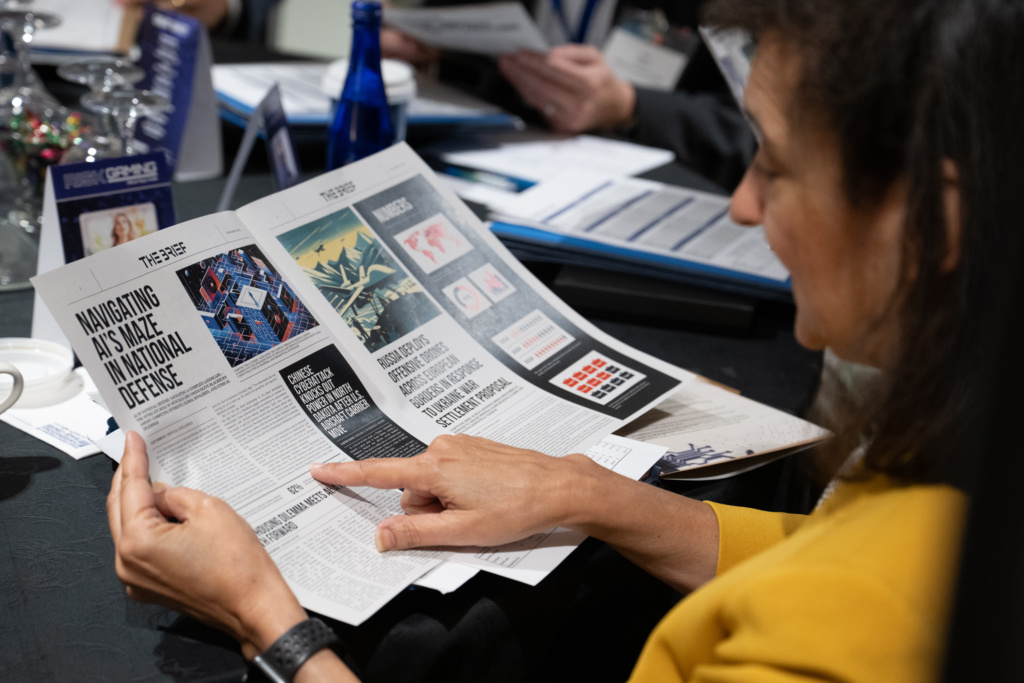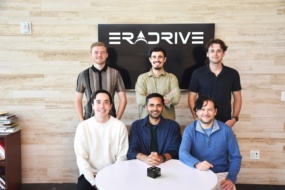Every tech founder trying to sell to the government—which these days, seems to be all of them—knows it’s not easy to figure out what agencies want. But spare some sympathy, too, for the government officials trying to figure out if 12 engineers in a garage really can put a targeting satellite on orbit.
It’s not just a matter of dollars and cents; for now, at least, the West relies on an open economy to maintain its technological edge over rivals like China and Russia, who depend more on state investment. In particular, military leaders looking for the most advanced tech must turn to dual-use companies that sell to both commercial and government customers.
Risky business: In July, a group of founders and investors joined officials from NRO and the Space Force to participate in a “riskgaming” exercise. The exercise was convened by the Aerospace Corporation, and designed by the VC firm Lux Capital.
“A huge part of it is also trying to break down barriers between the private sector and public sector,” Danny Crichton, the Lux partner who led the game, told Payload. “From a private company CEO, you’re just angry and pissed off that things aren’t happening so fast. But if you don’t understand the processes the Pentagon is dealing with—what they’re up against—that can also create a lot of friction.”
Game on: Like a wargame, this riskgame puts eight players in a tabletop scenario. Five participants from the government role-play as CEOs of AI companies, while three private sector participants represent the DoD, Congress, and the White House.
In this scenario, players worked through four rounds, each associated with the annual passage of the National Defense Authorization Act. Companies had to make decisions about where to invest and with what capital, while the government players worked together to outline government policy and spending.
The ultimate goal was to beat China to milestones in different segments of AI tech—and it didn’t always go well.
Breaking barriers: Players came face-to-face with the challenge of trying to make coordinated investment decisions that required both national policy alignment, and companies pursuing the right R&D at the right time.
“Just as in real government acquisitions, information is limited,” Space Force Lt. Col Tim Trimailo told Payload. “Time is limited. You don’t have every piece of information to make an informed decision. And you know, it made me very sympathetic to our industry partners—that their job is not easy.”
The feeling was mutual.
“A lesson from this is vastly greater empathy for people in government,” Sam Ramji, the CEO of AI startup Sailplane and an AI scout for True Ventures, told Payload. “The things that they have to deal with and decisions they have to make, [and] when they have to make them, are so out of step with the speed at which the industry is playing—which I take for granted.”

Duality of man: A major challenge was figuring out how to balance investments in technologies, based on demand from civil and government markets. “Given the opportunities set inside the market, there’s money I can make from the private sector, and there’s whatever the government’s willing to allocate,” Crichton explained.
In one round of the game, Ramji said, his team lost out because the government under-invested in AI biological models—which turned out not to have much of a commercial market—and over-invested in cybersecurity, which has a huge commercial market.
“One of the big things that we try to focus on is, well, how well does the government function?” Crichton said. “How much does it incentivize [early] investment, versus show up late? Essentially, how much is it kind of distorting the market to try to draw people to build technologies that it needs, as opposed to the private sector?”
Raise fast and open source: Several participants pointed to two factors that came up again and again in the games:
- Players acting as AI CEOs could raise money across the globe, but some sources of money—especially China—could lead US government players to cut off funding later on. Companies that raised lots of early funding abroad before the government cracked down seemed to get ahead of companies that stuck to safer investors, Debra Emmons, Aerospace Corporation’s CTO, said.
- Open-sourcing technology proved to be a way for companies to get ahead and undermine their rivals. “That’s a dynamic that I think is really, really important, particularly in those national security spaces where everything’s really closed,” Crichton said.
What’s next? Emmons said that Aerospace is considering hosting a more space-focused riskgame in 2026 around potential scenarios like space traffic management in congested orbits, or the challenge of space debris management.
Trimailo said he would be curious to see a riskgame focused on the Space Force’s Commercial Augmentation Space Reserve, which works with US space companies who volunteer to support the military in times of crisis.
“Government and industry partners have to make really, really important—sometimes existential—decisions based on limited information under short time constraints,” Trimailo said. “The more we collectively understand each other’s position, and that spot in the middle of the Venn diagram where our interests intersect, all parties are going to win.”




